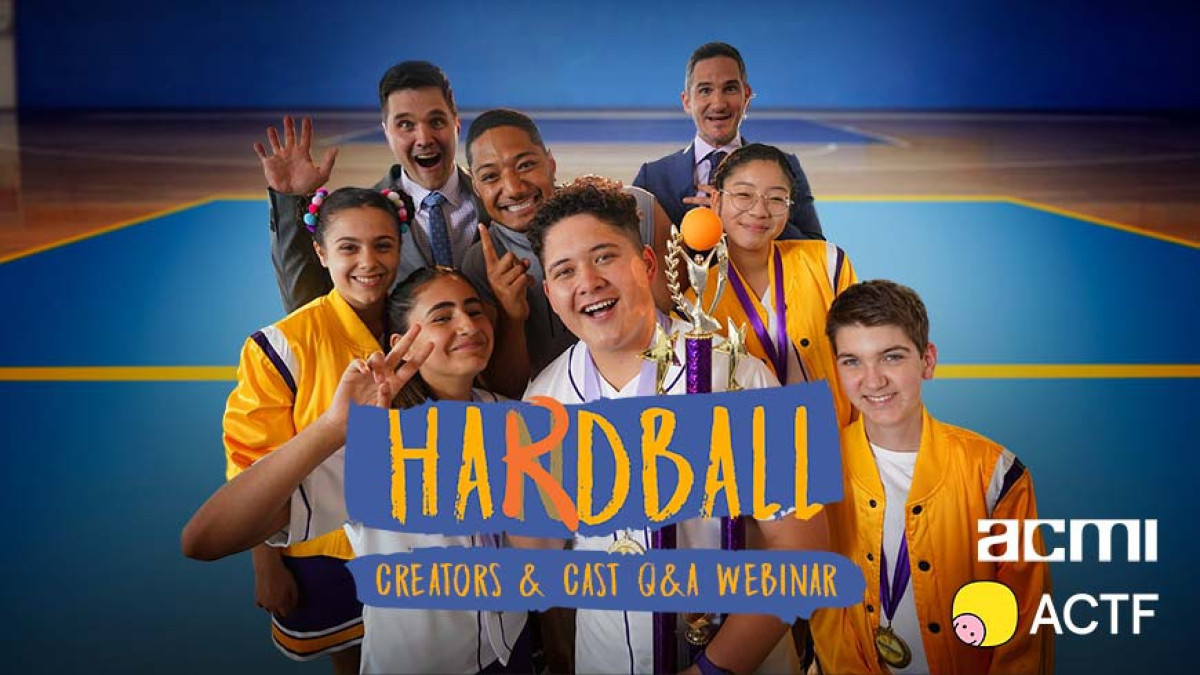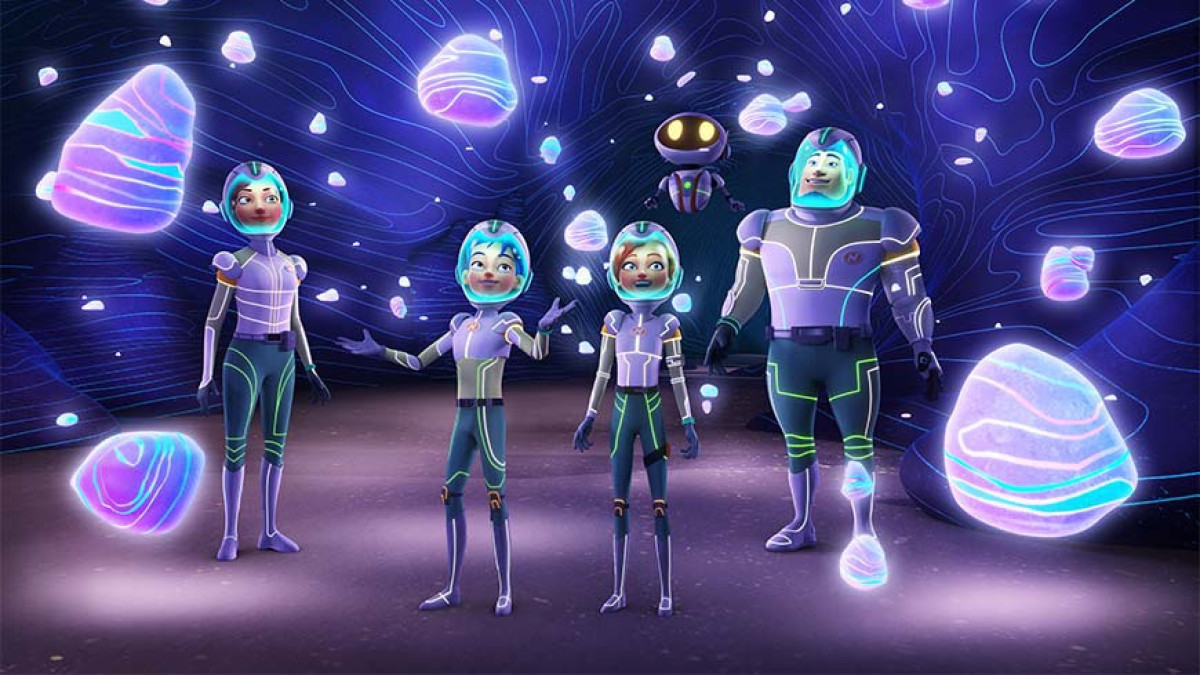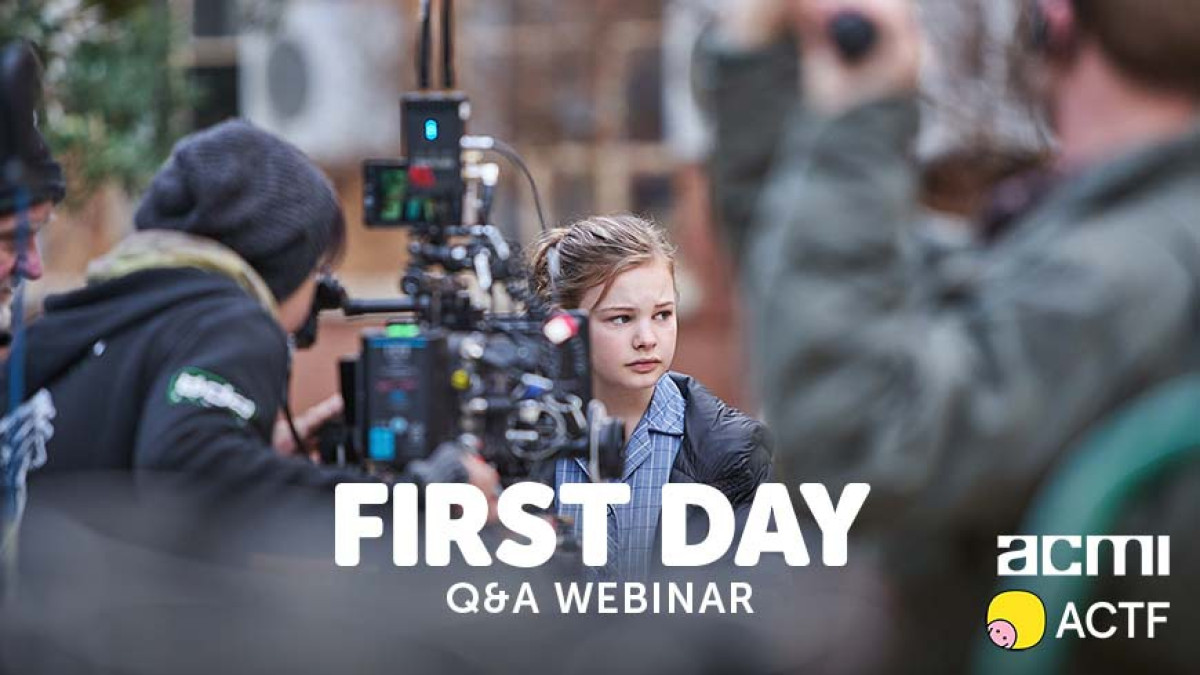ACTF News

In a special ACMI Education X ACTF event for Media Literacy Week, the creators and cast of Australian children’s comedy series Hardball took part in a Q&A webinar for primary school students.
Creators, writers and cast members Matt Zeremes and Guy Edmonds, and cast members Erin Choy (Tiffany) and Semisi Cheekam (Mikey) took more than 850 teachers and students from Years 3-6 behind the scenes in television production, deconstructing a scene from Hardball Series 2 and teaching students about the different elements that come together to bring a scene to life.
Hardball premiered in 2019, following fish-out-of-water Mikey in his mission to become Western Sydney’s top handball player. Series 2 (now streaming on ABC iView and available in the ACTF shop) sees Mikey and the gang go on an epic adventure to win an even more epic state doubles handball tournament.
In the scene chosen to be deconstructed for the webinar, Mikey asks Tiffany not to tell his friends that he might be transferring to another school.
“It’s all about this sort of impending drama, this thing that Tiffany knows about Mikey, but Mikey doesn’t want people to know about him,” says co-creator Guy Edmonds. “There’s this saying in drama and writing shows that ‘story is conflict’, so you’ve always got to have conflict between two characters, and that’s what makes stuff interesting.
“It’s like Tiff has power over Mikey in this moment, so you can see Tiff in this scene has got the control and the power and the status, and she’s using that over Mikey,” says co-creator Matt Zeremes.
“Usually, Mikey’s quite cool and doesn’t get worried about stuff but in this scene you can tell that he is quite worried because he doesn’t want his friends to find out his secret.”
But how does the scene effectively convey this message to the audience?
Body language and timing
Body language is an incredibly important tool and, if used correctly, will help audiences understand the emotions felt by the characters and the dynamic between them.
“What was Tiffany doing through that whole scene? She had her arms crossed,” says Guy. “And that says a lot about how someone feels about someone else. If Erin (Tiffany) had played that scene, kind of, open, it wouldn’t have been as scary. There’s something very defensive about having your arms crossed. A lot of the story is told that way.”
One of the key events in the scene is when Tiffany uses hand gestures to indicate that she’s holding an imaginary ace card.
“It was really important that we made sure that the audience would be able to understand what Tiffany and [Mikey] were talking about,” says Erin Choy, who plays Tiffany.
“The placement of the hand – just holding the [invisible] ace card next to Tiffany’s head kind of communicated that she had the upper hand, and in terms of status, she was higher than [Mikey] because she knew a secret that no one else did.
“With the timing, I think that the reactions – for example, Tiffany kind of does a smirk and then Mikey kind of reacts to it and goes, ‘oh, I’m in for a big one here”, so I think the timing of that was really important in terms of everyone understanding what she meant – what they meant.”
Filming, editing and special effects
One of the most valuable tools at the disposal of film and television crews is the ability to use specific camera tricks and creative editing including visual and sound effects.
“The sound effects play a really big role in this scene,” says Matt. “You can see with the little explosions and the miming – we’re using metaphor there, which is that things are going to explode if Mikey’s secret comes out. Those little sound effects really effectively help us convey those ideas without doing it in a boring way where the characters just say everything that they think and feel. It allows you to be a bit more inventive by using clever sound design.”
“I reckon 80 per cent of the balls you see in the handball tournaments are all VFX – which stands for visual effects,” says Guy. “So Mikey and the team aren’t actually hitting balls – we put all that in later. [It’s] airball.
“The shots that we used, the camera angles and stuff – Hardball has a really consistent ‘visual style’. You’ll notice that there’s moments where we pushed in and the camera got moved closer to the characters – you do that to emphasize moments and to make the audience feel for the character in a particular moment.”
“Once everyone else does their little bit on it and adds the sound effects and all the bells and whistles, it really brings it to life,” says Matt.
Tone
In film and TV narratives, tone is crucial in guiding viewers in how they should respond to what they’re seeing on screen.
“The overall tone in Hardball [is] first and foremost it is a comedy,” says Guy. “But a thing that’s really important to Matt and I, and to a lot of writers, is that it’s one thing to be funny, but things are even more funny if you care about the characters that are in the show and the things that are happening to them. The term Matt and I use for that is ‘heart’. So it’s got to have the laughs, and it’s got to have the heart.
“Overall, even when it’s dramatic in Hardball, like that scene – you could say it’s a dramatic scene in that there’s one character who is holding something very serious over another character, but in post-production – that’s when the editing and sound effects are put on… it makes something that could be very dramatic still funny, because this show is first and foremost a comedy.”
Breaking the fourth wall
Another tool used less frequently in film and television is breaking the fourth wall, where an actor addresses the audience directly.
“For those of you that don’t know, that’s something that Mikey does throughout Hardball every episode – he has about two or three little moments with the audience where he’s inside the scene and he turns to the camera and has a little chat with the audience for a second,” says Matt.
What is the most challenging part of making a TV show?
During the Q&A part of the webinar, Guy and Matt were asked what the most challenging part of making a television show is.
“Getting it made,” says Matt. “Getting someone like [the] ABC to come on board and buy into your idea is really challenging.”
“It takes millions of dollars to make a show… it’s a lot of risk – you don’t know if people are going to watch it or like it,” says Guy.
“Then from an actor’s perspective, it’s probably challenging spending heaps of time on set, getting up really early…” says Matt.
“The older I get, it’s harder to remember lines,” says Guy.
The full webinar is available on the ACTF YouTube Channel and the Hardball Series 2 Teaching Toolkit is available to download for free here. Both resources are suitable for Years 3-6.



